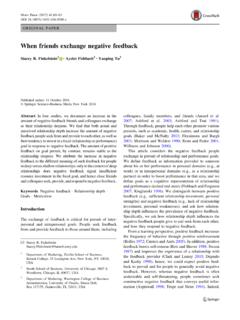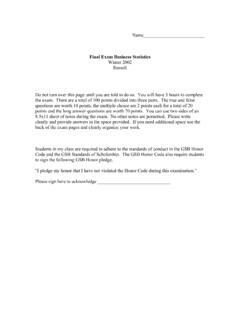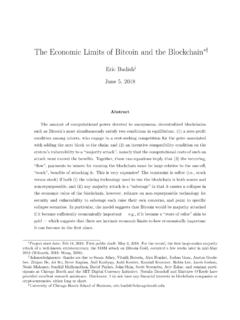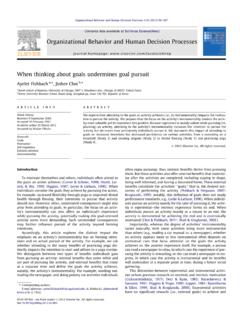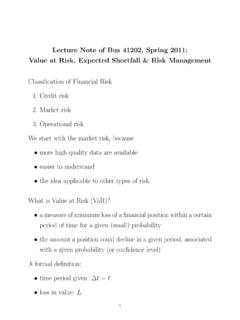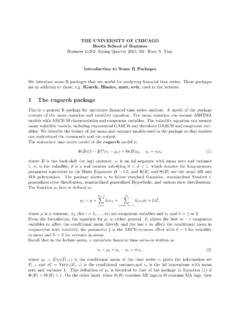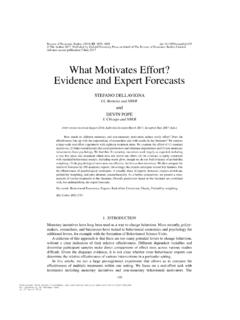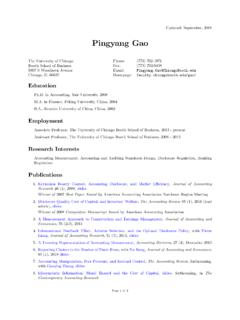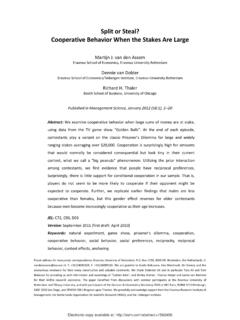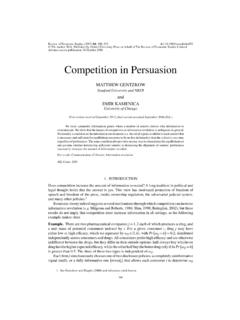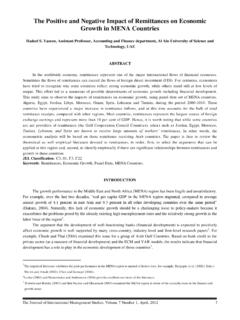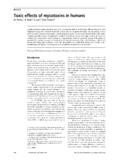Transcription of How Positive and Negative Feedback Motivate Goal …
1 How Positive and Negative Feedback Motivate GoalPursuitAyelet Fishbach1*, Tal Eyal2, and Stacey R. Finkelstein11 University of Chicago2 Ben Gurion UniversityAbstractThis article explores the Feedback individuals give, seek, and respond to in the course of pursuingtheir goals. We propose that Positive Feedback motivates goal pursuit when it signals an increasein goal commitment, whereas Negative Feedback motivates goal pursuit when it signals insufficientgoal progress. We review research suggesting that whether individuals are drawn to evaluate theirlevel of commitment versus rate of progress determines the type of Feedback ( Positive or Negative )that best motivates them to pursue their goals.
2 We then review research suggesting that theseeffects of Feedback operate by inducing Positive and Negative general moods as well as is essential for goal pursuit. Information on successful and failed actions allowsindividuals to adjust and direct their efforts to match the challenge they are facing (Bandura,1991; Dweck & Leggett, 1988; Festinger, 1954; Locke & Latham, 1990). Consequently,there are specific social roles associated with providing Feedback on goal pursuit. For exam-ple, educators, coaches, and bosses all provide Feedback that helps individuals monitor thelevel and direction of their actions to ensure they meet their goals.
3 In addition, people seekfeedback, including praise and criticism, from those surrounding them: friends, familymembers, colleagues, and neighbors. The Feedback people seek can refer to their masterygoals, such as how well they perform a new skill, to their self-improvement goals, such asexercising or dieting, and to their relationship goals, such as how well they maintain theirsocial connections. Across these various Feedback agents and goals, we explore the circum-stances under which Positive Feedback on accomplishments, strengths, and correct responsesversus Negative Feedback on lack of accomplishments, weaknesses, and incorrect responses ismore effective in motivating goal pursuit and hence is more frequently sought and number of theories offer a universal answer to our question, attesting that eitherpositive or Negative Feedback is generally more effective.
4 Several motivation theories attestthat Positive Feedback is more effective for motivating goal pursuit than Negative feedbackbecause it increases outcome expectancy of the goal and perceived self-efficacy of thepursuer (Atkinson, 1964; Bandura & Cervone, 1983; Lewin, 1935; Weiner, 1974; Zajonc& Brickman, 1969). According to this theoretical approach, Positive Feedback increasespeople s confidence that they are able to pursue their goals, leading people to expect suc-cessful goal attainment. Negative Feedback , in contrast, undermines people s confidencein their ability to pursue their goals and their expectations of success.
5 Because positivefeedback is effective, various social agents use Positive Feedback to encourage individualsto internalize or integrate new goals to their self-concept, with the expectation that theseindividuals will then be more committed to pursue the goal on subsequent occasions(Ryan & Deci, 2000).Social and Personality Psychology Compass4/8 (2010): 517 530, 2010 The AuthorsJournal Compilation 2010 Blackwell Publishing LtdOther motivation theories make quite the opposite prediction, suggesting that negativefeedback increases motivation more than Positive Feedback .
6 For example, cyberneticmodels of self-regulation propose that Positive Feedback on successes provides a sense ofpartial goal attainment, signaling that less effort is needed to accomplish the goal. In con-trast, Negative Feedback on lack of successes signals that more effort is needed and encour-ages goal pursuit (Carver & Scheier, 1998; Higgins, 1987; Kluger & DeNisi, 1996; Locke& Latham, 1990; Miller, Galanter, & Pribram, 1960; Powers, 1973). According to cyber-netic models, then, social agents would be more effective if they emphasize this article, we argue against a universal answer to the relative impact of positiveand Negative Feedback .
7 Instead, we suggest that the motivational advantage of positiveand Negative Feedback comes into play under different sets of circumstances. We accord-ingly explore when each type of Feedback is more effective in motivating goal of Self-Regulation: A Framework for Exploring the Impact ofFeedbackWe base our analysis in research on the dynamics of self-regulation, which explores thecourse of goal pursuit when individuals consider a sequence of several (at least two)actions toward a goal (Fishbach & Dhar, 2005; Fishbach, Dhar, & Zhang, 2006; Fishbach& Zhang, 2008; Koo & Fishbach, 2008; Zhang, Fishbach, & Dhar, 2007).
8 For example,people often choose whether to eat healthily for lunch and dinner or whether to recyclepaper and also save water. When people choose their actions with respect to other, com-pleted or upcoming actions toward their goal, they can choose actions that reinforce theprevious ones by pursuing the same goal in a dynamic ofhighlighting( , recycle paperand save water) or they can choose actions that compensate for previous ones by pursuinga different goal in a dynamic ofbalancing( , recycle paper but waste water). Whenpeople highlight, they are more likely attend to a goal if they have previously attended toit.
9 When they balance, people are more likely attend to a goal if they have not previouslyattended to research on the dynamics of self-regulation identifies when people highlight versusbalance, for example, when a person that has been working vigorously during the day willalso stay late at the office (highlight) and when will she go home early (balance). We findthat how people represent pursuing a goal determines the dynamic they follow. We specifi-cally distinguish between two representations:expressing commitmenttoward a desirable stateandmaking progresstoward this state.
10 For example, a dieter who chooses to eat healthyfoods can view this choice as expressing goal commitment, including Positive evaluation ofthe dieting goal and high expectancy of success. Alternatively, the dieter can see the healthychoice as indicating progress and partial attainment of the dieting goal. In a commitmentrepresentation, people highlight because each action increases their sense of personal com-mitment to the goal, including the perception that the goal is important and expectancy ofattainment is high (Fishbein & Ajzen, 1974; Lewin, Dembo, Festinger, & Sears, 1944;Liberman & Fo rster, 2008; Vroom, 1964).
